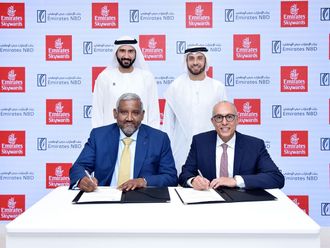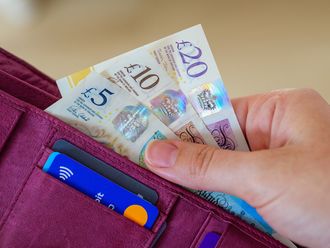Dubai: Egypt’s banking sector outlook has been gaining strength from an improving macro-economic environment and operating conditions, according to banking sector analysts.
Recognising the visible improvements, Moody’s Investors Service recently revised the outlook for the country’s banking system to stable from negative, reflecting its expectation that banks’ funding and liquidity positions are expected to remain strong amid improving operating conditions over the next 12-18 months.
“The change reflects improvement in the operating environment for banks in Egypt, driven mainly by the country’s improving macroeconomic performance and the new government’s ongoing commitment to fiscal and economic reform. We expect real GDP growth to accelerate over our outlook horizon, which will not only create business opportunities for the banks but also support improvements in their loan quality while allowing them to maintain strong funding and liquidity positions,” said Melina Skouridou, Moody’s lead analyst for Egyptian banks.
Meanwhile, Egyptian banks’ high exposure to government securities, accounting for 43 per cent of assets and nearly seven times their equity, continues to link the credit profile of lenders to the government’s credit quality. Moody’s forecasts that a pick-up in Egypt’s GDP growth — to 5 per cent for the 2016 fiscal year ending in June, from 4.5 per cent in fiscal 2015 and 2.2 per cent in fiscal 2014 — will mainly be driven by large, government-led infrastructure projects, increased foreign investment and a rise in tourism.
The second quarter of 2015 saw further signs of stabilisation in the Egyptian economy, albeit at a low base, according to Emirates NBD’s quarterly MENA Economic review. The June Purchasing Managers’ Index (PMI) rose to its highest reading all year at 50.2, and above the series average of 48.7.
Some signs of recovery have also been evident in the tourism sector, with average hotel occupancy rates hitting 54 per cent in the first five months of 2015 — the highest recorded since 2010 — and well above the average rate of 46 per cent recorded in the same period in 2014.
Private sector credit growth also hit a multi-year high of 16.9 per cent in April, highlighting stronger confidence in the medium-term outlook.
With steady improvement in GDP growth, rising consumer confidence and growing business investment will lift annual loan growth rates to around 20 per cent from 14 per cent in 2014.
Although downside risks relating to domestic political stability and security remain elevated, the ratings agency said its expectations for the country’s performance are in sharp contrast to the economic conditions over a year ago, when Egypt was troubled by considerable economic and political uncertainty.
Recent foreign investments and aid pledges, especially the $6.5 billion (Dh23.87 billion) in GCC aid has strengthened the external position of the Egyptian economy.
According to the International Monetary Fund’s latest World Economic Outlook report, Egypt’s macroeconomic stabilisation plans and wide-ranging structural reforms are expected to raise confidence levels.
The Institute of International Finance (IIF) believes that improved economic environment in Egypt will strengthen its banking and financial services sector.
“Market sentiment in Egypt has improved markedly following greater political stability and the recent implementation of several reforms, including steps to reduce subsidies, tax reform measures, approval of the new investment law, and other structural reforms to improve the business environment,” said Garbis Iradian, chief economist for the Middle East and Africa at IIF.












